Last Updated on March 13, 2022 by Heather Hart, ACSM EP, CSCS
Runners are a strange bunch, and none of us will deny it. In addition to the slew of strange characteristics that come with being a runner, such as paying other people to let us run, and perfecting the art of the snot rocket (see “Farmer Blow” definition below), our community has its own special language. The terminology included in many pre written workouts is often running specific and unfamiliar to race novices; but the added slang and “runner lingo” that comes up in everyday running conversation is enough to leave a beginner (or non runner) utterly confused. In no particular order (I’m a trail runner, I prefer the unexpected), I present you with definitions of common running terms and acronyms, mostly serious, some sarcastic.
50+ Running Words Defined
(And a huge thank you to all of my friends and readers who helped provide pictures for this post!)
FOMO
An acronym for the Fear of Missing Out. This typically happens when all of your friends have signed up for a kickass race, and you simply can’t stand the thought of missing out on the fun, even though you know you probably shouldn’t sign up due to training/financial/personal reasons. For example: If seemingly everyone you know is running a local race next weekend, but you can’t because your sister is getting married and your family would disown you if you missed the wedding, you are likely suffering from a case of FOMO. In reality, not EVERYONE you know is running said race, but FOMO sure makes it feel that way. Kind of like when you were 8 years old and EVERYONE in school had a Trapper Keeper, so you just HAD to have one too? That’s FOMO. Note: FOMO can leave you bitter at times. Don’t let FOMO ruin your fun.
Carb Loading
The act of building up glycogen stores in muscle prior to a big race. Though technically carb loading is an intricate process that involves carb depletion then a few days of loading, most runners simply use the excuse of “carb loading” to eat massive quantities of pasta the night before a race.
Hardware (Bling)
Most large races give out finishers medals to all participants who finish the course in the designated time. Those finishers medals are often referred to as “hardware” or “bling”. Medals can vary from standard medallion size, to large and intricately shaped.
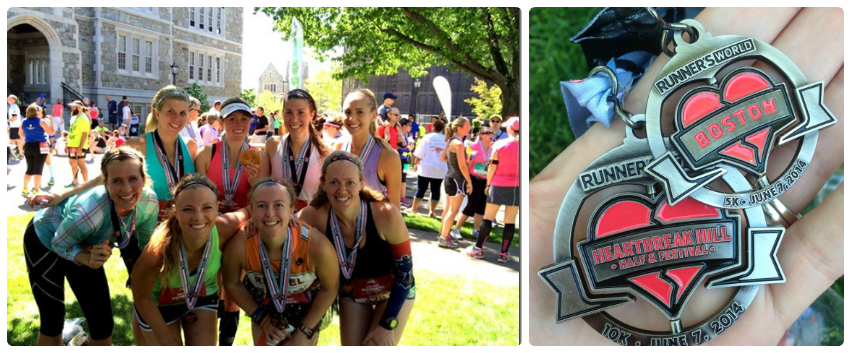
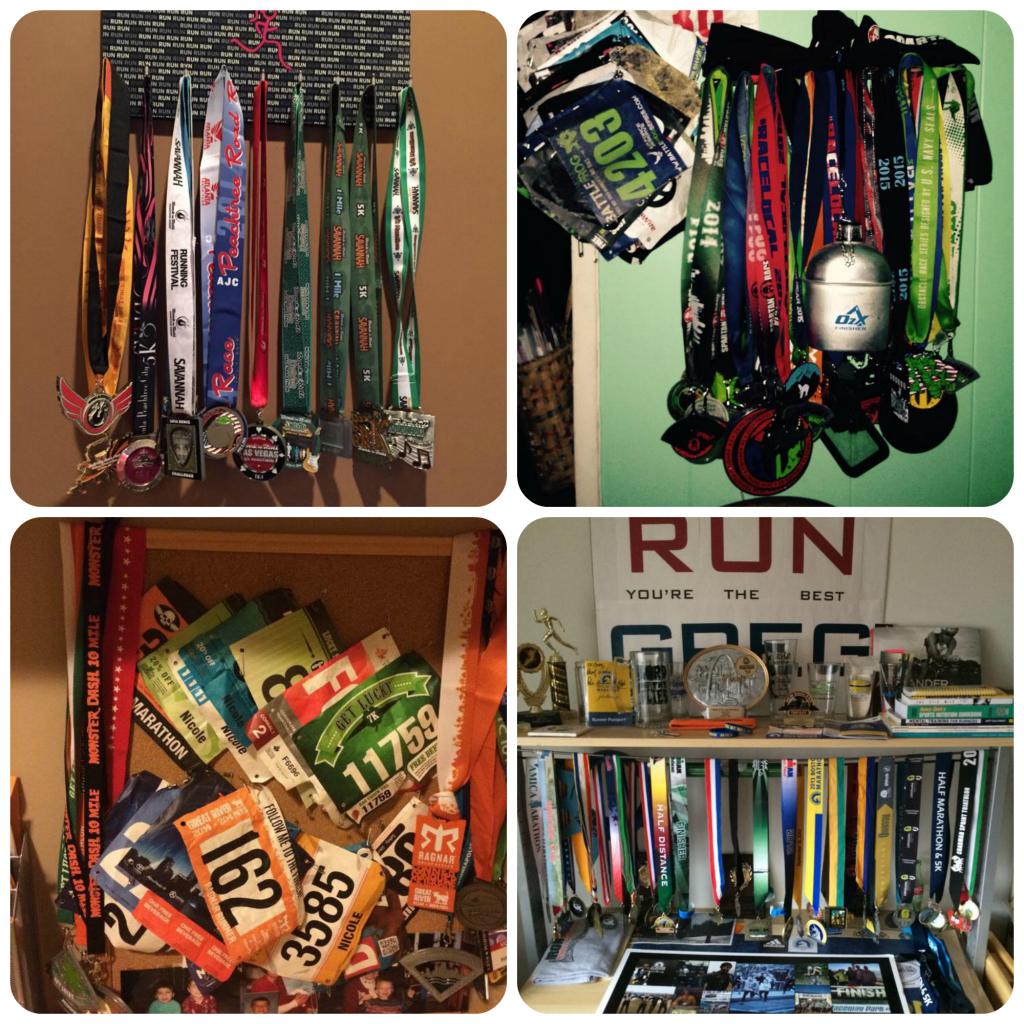
Marathon
26.2 miles. Runners will give you the side eye if you ever refer to that 5K your cousin ran as a “marathon”. While we are at it:
5K
3.1 miles
10K
6.2 miles
Ultra
Any race distance that is longer than a marathon (26.2 miles). Typically ultra races start at the 50K mark (31.07 miles), but other popular distances include the 50 miler, 100K (62.14 miles) and 100 mile races. Yes, people willingly run 100 miles for fun. Some run even further.
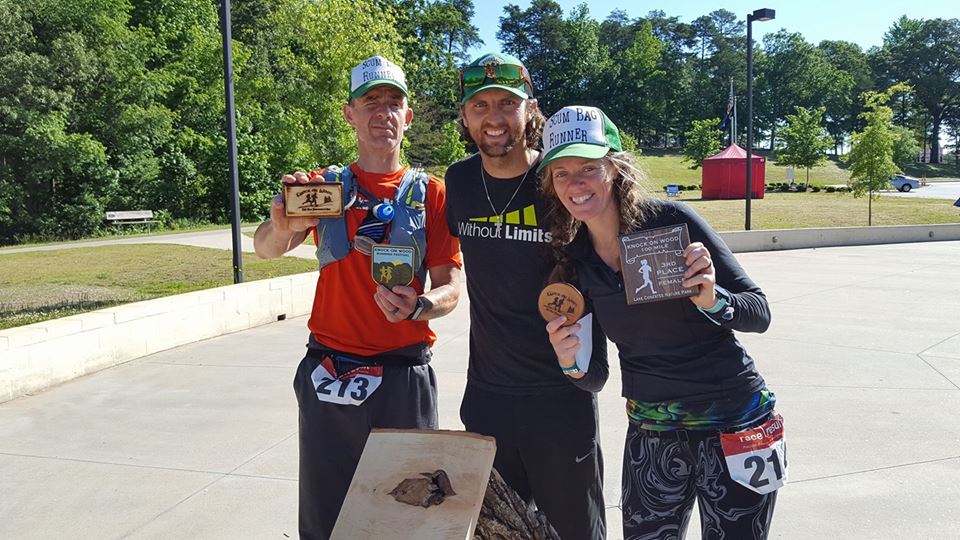
Foot Strike
Essentially, which part of your foot hits the ground first during while running. In the past, many people were instructed to run with a heel strike (heel hitting the ground first) and then rolling forward and pushing off of your toes. Now, research is showing that a midfoot strike (hitting the ground with the center to ball of your foot) is more natural and less stressful to the body. Regardless, go to any race and you will see that the foot strike of runners, even the elites, varies greatly.
Runners High
The coveted euphoria that stems from a particularly good, or even sometimes bad, run. Scientifically speaking, a runners high stems from the secretion of norepinephrine, dopamine, serotonin, and arguably endorphins, all of which can have a positive effect on mood. Realistically speaking, a good runners high is worth a thousand bad runs, and might be one of the main culprits for the addiction to this sport in the first place.
Gait
Simply put, running gait is the manner in which a person runs. Many runners will have their gait analyzed by a professional to help them determine any biomechanical deficiencies that can be corrected by running shoes or even physically changing running form.
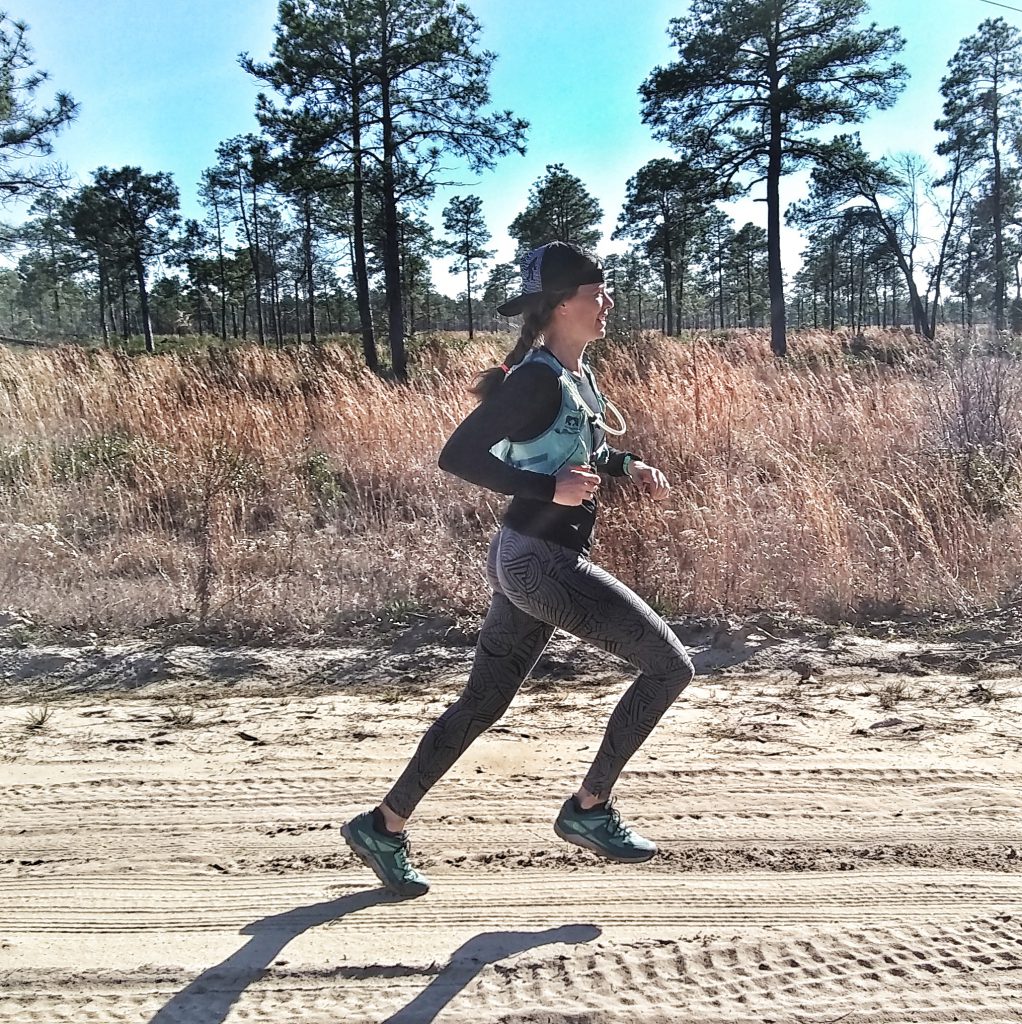
Ragnar
Though relay races have existed for some time now, the Ragnar Relay series seems to be one of the most popular event. Teams of 11 runners (or 5, if you really like running) pile into two vans and tag team running 200(ish) miles, day and night, relay-style. Check it out: www.ragnarrelay.com
PR
Short for “personal record”. This can be both in distance (furthest ever run) and in time (fastest ever run for a specified distance).
Farmer Blow
Also referred to as the “snot rocket”, a farmer blow is the art of plugging one nostril and with one solid blow, evacuating the contents of the other nostril hopefully onto the sidewalk or road and not all over your face or arm. Bonus points for being able to complete a farmer blow while still running.
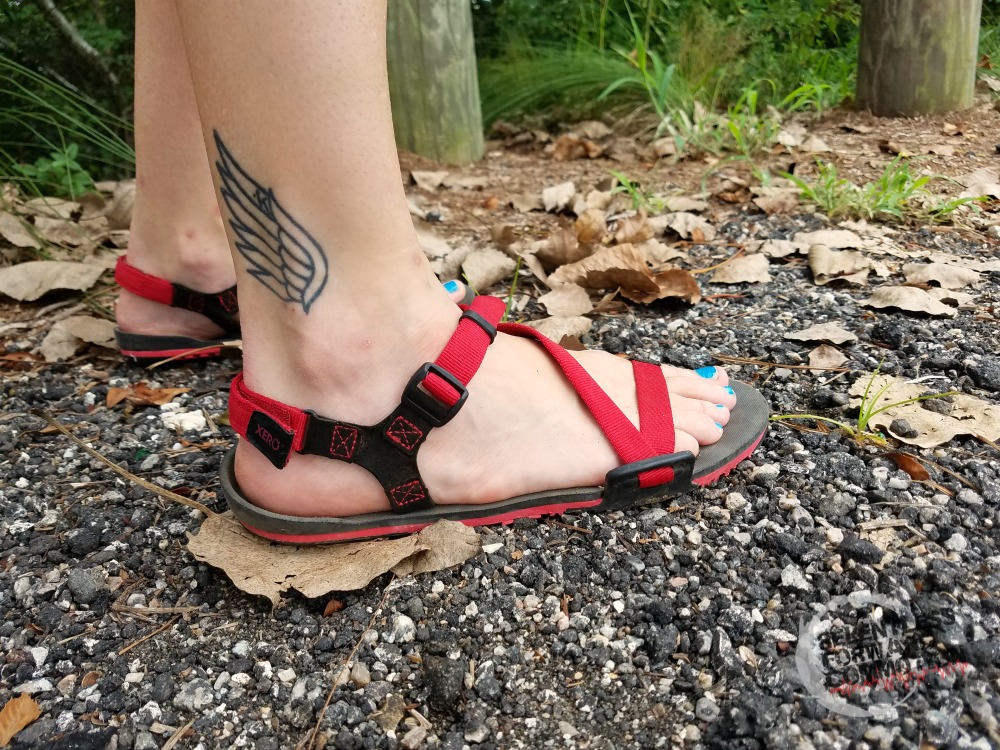
GU
Though GU is the actual name of a specific brand’s product, it has become a proprietary eponym (kind of like “Kleenex” or “Q-Tips”) for any gel food substance runners ingest to keep their blood sugar at an even level, typically during longer endurance events. It’s sticky, doesn’t always taste good, and often has the consistency of glue, but it works really well aiding to avoid the bonk (see definition below)
Streaking
Not to be confused with running through a football game in your birthday suit, “streaking” in the running world refers to consecutive days running. Typically one mile per day or more is required for a valid running streak.
Fartlek
Fartlek training is a continuous interval workout that combines fast paced, higher intensity running with recovery periods of medium to lower effort running. Typically, these bursts of speed are added into the middle of a regular training run. Unlike traditional interval training, which consists of specific distances or timed intervals, fartlek training is intuitive and unstructured. The runner will choose the distance and pace of the faster interval based upon perceived effort.
Bib
The number assigned to you during a race, typically displayed on a square piece of paper. Pro tip: bibs are worn on the front of your shirt, not the back.
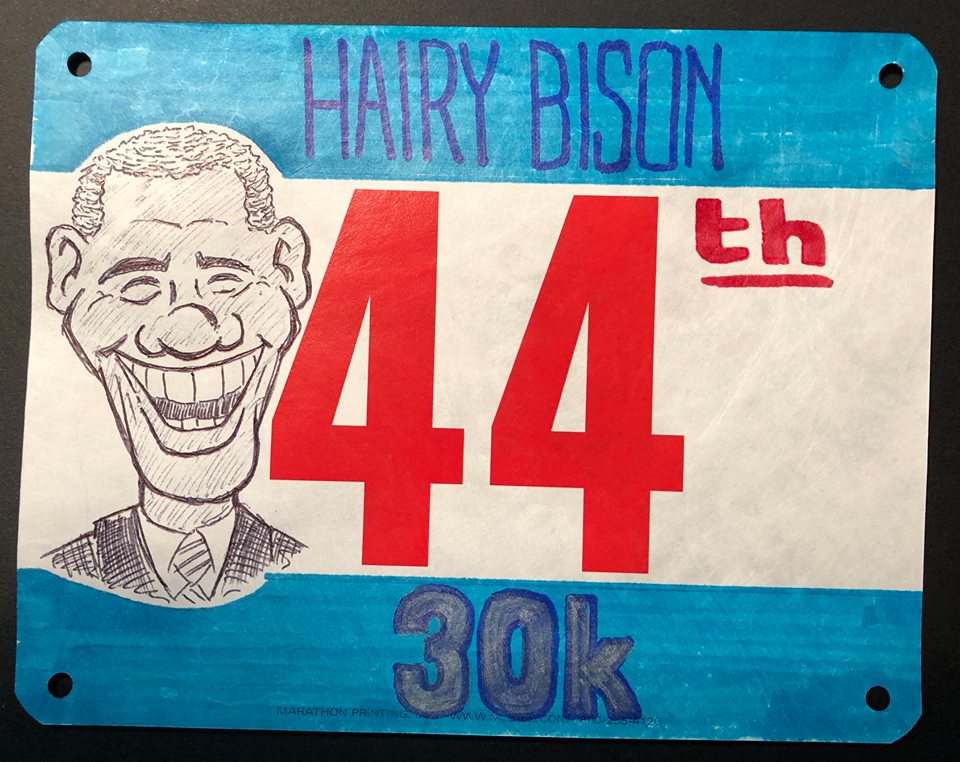
LSD
Acronym for “Long Slow Distance”, and LSD is a long distance training run that is performed at a pace significantly slower than expected race pace. Typically, an LSD is programmed once a week into a race training plan to both train your muscles to cover the distance but also to train the body to effectively utilize varying fuel sources (stored fats, muscle glycogen, etc).
DOMS
Acronym for “Delayed Onset Muscle Soreness”, DOMS is what happens when you run 20+ miles one day then can’t walk up, or worse…down, the stairs the next day. Though many theories exist, scientists are still baffled by exactly what causes DOMS. Most runners have a sadistic love/hate relationship with DOMS.
The Wall
A not so magical place that typically exists between mile 19 and 26 of a marathon. You’ll be running along, feeling on top of the world, when BAM! a switch is thrown and everything hurts, you feel physically and emotionally drained, and for a few minutes, wonder why on earth you decided running a marathon would be a good idea. There might even be tears. You have hit “the wall”.
Bonk
Similar to “The Wall” (see above) but a “bonk” can happen at any time, during any race. When an athlete goes from seemingly strong and well trained to a an utter, exhausted, mess, they have “bonked”. A bonk is often related to poor nutrition and low blood sugar, and can often be overcome mid race with the right snacks and a second wind.
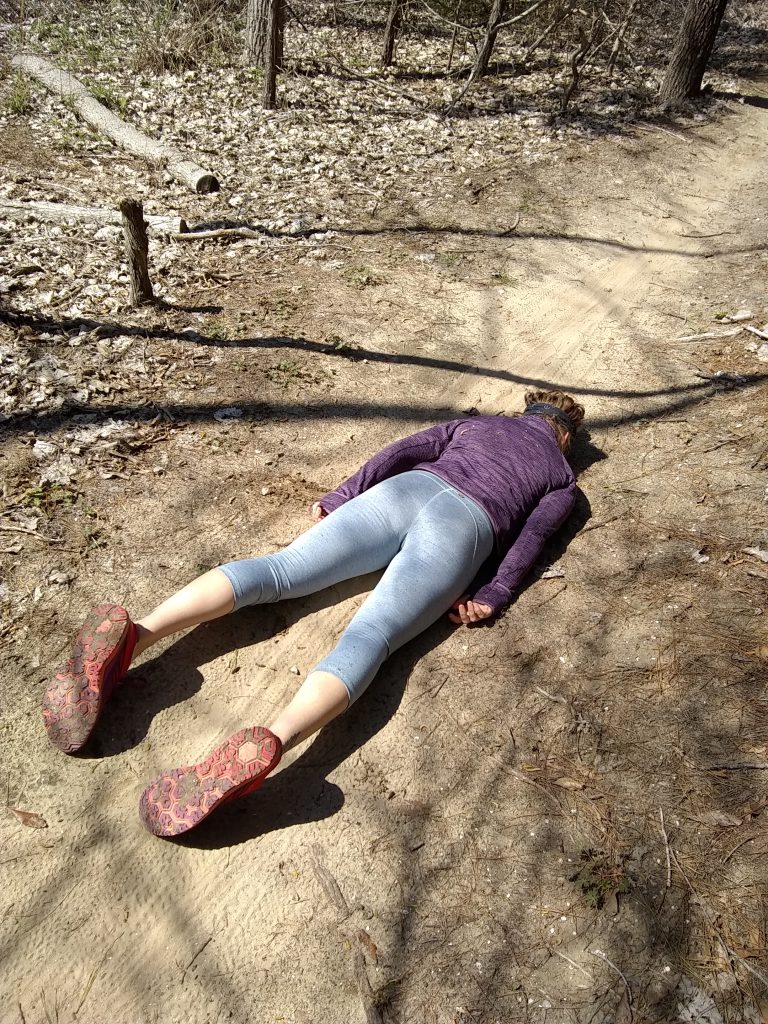
Junk miles
Miles run without rhyme or reason to simply add numbers to your total mileage are often referred to as junk miles. Proponents of specific training plans are often anti junk miles. Those who don’t keep track of such things simply refer to this as “running”, and believe there is no such thing as a “junk mile”.
Chicked
Getting passed by a female athlete is also known as getting “chicked.” While often used as a term of respect, many community members (male and female alike) aren’t fans of the word (or, I suppose, aren’t fans of getting “chicked”.)
Body Glide
Another proprietary eponym for any sort of lubricating substance that helps prevent chafing, blisters, and bloody nipples (it’s a real thing, unfortunately). Body Glide typically comes in a deodorant-type-stick making it easy to apply.
Dreadmill
Derogatory term for a treadmill. (The treadmill is not THAT bad, you guys…)
OCR
Acronym for Obstacle Course Racing. More than simply a mud run, OCR has taken running and mud and added a number of obstacles to test your mental and physical strength in varying situations. Running is hard. Climbing up ropes and over 10 foot walls mid half marathon is even harder.
Splits
The time it takes you to run a specified distance. If you are running repeats or laps on an 800 meter track, a “split” could refer to the time it takes to complete one 800 m lap. If you are running a marathon, splits are typically measured in miles.
Negative splits
Running the second half of a race or training run faster than you ran the first half, is referred to as running “negative splits”
ITBS
Acronym for Iliotibial band syndrome, ITBS is typically the cause behind knee pain in runners, or “runners knee”.
Bandit
A bandit is one who runs an official road race without officially registering for the event or paying registration fees. Bandits are popular in large races that sell out fast, and are generally frowned upon by the running community. While banditing may appear innocent at first, a bandit may actually end up taking resources from registered runners, from water to race medals to even the attention of emergency medical staff. Don’t be a jerk: don’t bandit.
Runchies
When you come back from a really long run and feel like you could eat absolutely anything and everything in the kitchen, you have the “runchies”. This condition is also referred to as “Rungry”.
Garmin
A GPS watch designed to keep track of overall pace, distance, split time, etc. Though many brands of GPS watches exist, “Garmin” tends to be the most recognized and therefore used name (even if your watch isn’t technically made by Garmin)
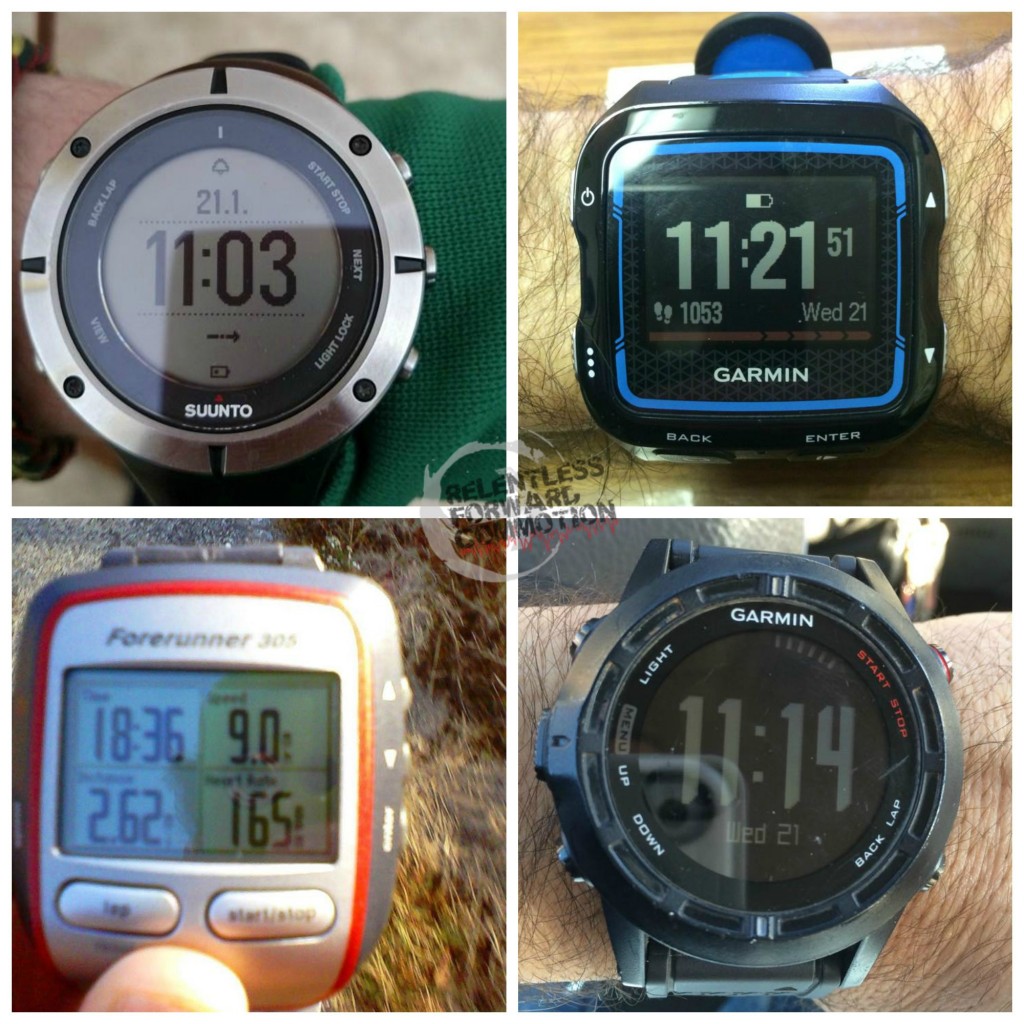
DNF
“Did Not Finish.” This can be due to pulling yourself out of a race, or simply not finishing in a designated course time.
DNS
“Did Not Start.” If you registered for a race, but for whatever reason didn’t show up to the start line, then you are a “DNS”
DFL
“Dead F*cking Last”. The very last person to cross the finish line. Doesn’t matter, you still finished. As the equation goes: DFL>DNF>DNS (if you’ve been paying attention, this equation makes sense. Though in certain cases such as an injury, it doesn’t always apply. Which is where the term “live to see another race” comes into play.)
BQ
“Boston Qualifier”. Many non runners don’t realize that in order to officially run the Boston Marathon, you must gain entry by either a charity slot OR running a qualifying time at another race. Boston Qualifying standards are moderately difficult for the average runner, and thus achieving a “BQ” is a great honor and source of pride (and frustration when you are mere minutes or seconds away) for many. (see the full Boston Qualifying Standard Times here)
Clock Time
During a race, the clock starts from the time the official “gun” goes off. Your clock time is the amount of time it took you to finish the race from the moment the race started to the moment you cross the finish line.
Chip Time
Some races are large, and because of the crowds it may take a few minutes or more to cross the start line after the official clock time starts. In many races runners are given a timing chip that attaches to their shoe or race bib. The chip starts the second the runner crosses the starting line, and stops the second the runner crosses the finish line. Chip times are far more accurate to the runners actual race time than clock times.
C25K
Acronym for Couch to 5K, a beginner training plan to take non runners from “the couch” to running their first 5K.
Tempo Run
A tempo run is typically run at your 10K race pace, or about 80 to 85 percent of your maximum heart rate. Unlike speed intervals, a tempo run is usually sustained for a longer period of time or distance, usually around 20 to 30 minutes or a specified number of miles. Tempo runs should be performed at a challenging, yet manageable pace. The goal of a tempo run is to help develop and increase your anaerobic, or lactate threshold, as well as increase speed
Speed Intervals / Speed Work
Also referred to as “repeats” or a “track workout”, speed intervals are short bursts of fast running, usually done on a 400 meter track. A speed interval workout will traditionally prescribe a certain number of various distance sprints or hard runs, such as 200 meters, 400 meters, 800 meters, and sometimes even 1600 meters, with walking or slow jogging recovery intervals.
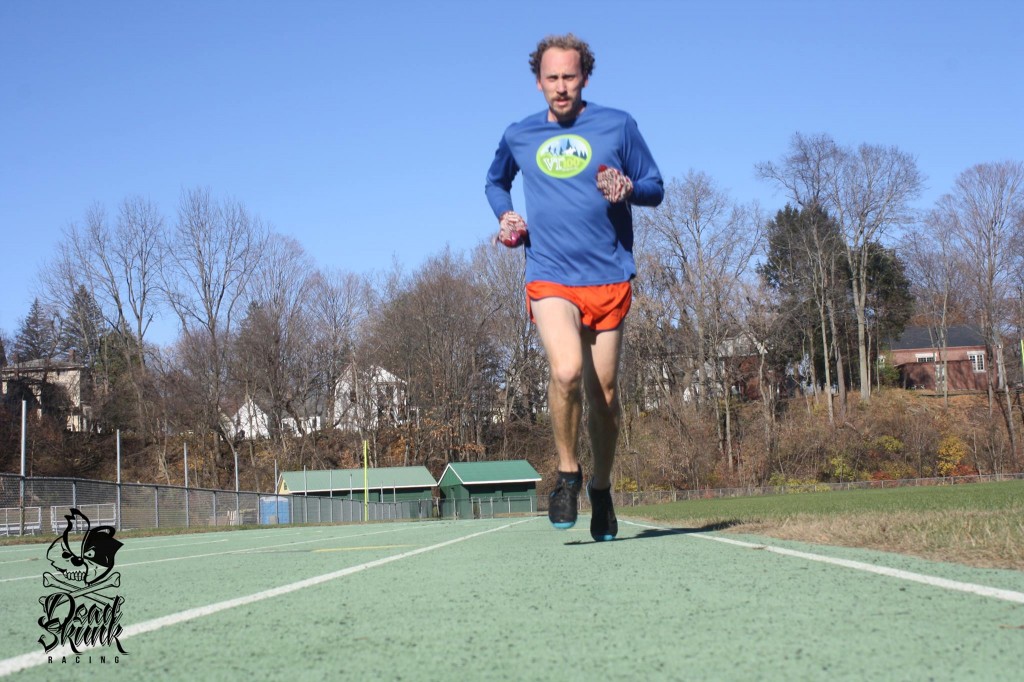
Pronate
Pronation refers to the inward roll of the foot during normal motion and occurs as the outer edge of the heel strikes the ground and the foot rolls inward and flattens out. A moderate amount of pronation is required for the foot to function properly, however damage and injury can occur during excessive pronation
Supinate
Supination is the opposite of pronation and refers to the outward roll of the foot during normal motion. A natural amount of supination occurs during the push-off phase of the running gait as the heel lifts off the ground and the forefoot and toes are used to propel the body forward. However, excessive supination (outward rolling) places a large strain on the muscles and tendons that stabilize the ankle.
Yasso 800’s
A running workout devised by, and named after, one of the greatest guys in the running community (Bart Yasso). The workout involves 10X 800 m repeats with in a specified time, with an equal rest period in between, that in theory, can help predict a marathon finish time. Check this page out for more information: Yasso 800’s explained.
Warm Up
The same concept as the warmup you learned in gym class. A warm up consists of 5 to 20 minutes of easy running, jogging, walking, or other exercise before a race or a prescribed workout. A warm up is a vital to an athlete, as it slowly and safely raises ones heart rate and circulates blood to the muscles, helping to prevent injury.
Cool Down
A cool down is performed after a workout or race, and should consist of slow running or jogging. The purpose of a cool down is to allow the heart rate to safely return to its resting level, as well as loosen up the muscles before ceasing exercise.
Base Mileage
The average number of miles per week a runner typically runs before starting a specific training cycle.
Aid Station
Typically tables set up along a race course where water, sports drinks, and sometimes snacks are given out
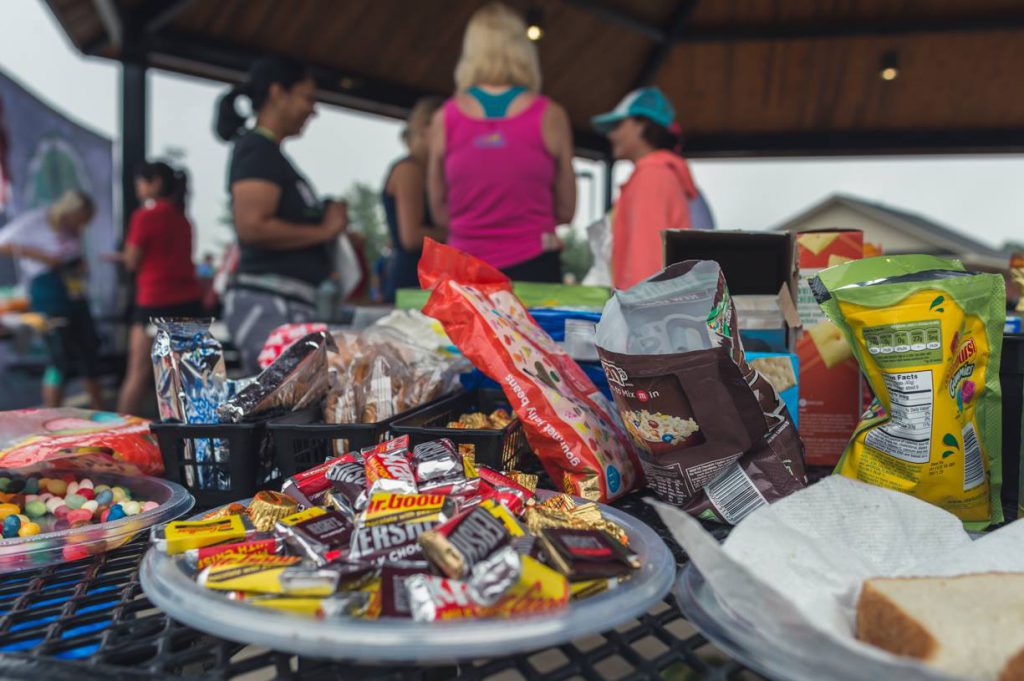
Cross Training
Cross training consists of physical activities or forms of exercise other than running, such as swimming, cycling, or weight training. Cross training is used to increase conditioning and injury prevention for running, as well as a means of adding variety to your workout schedule.
Pace
Pace refers to the expected time it takes to run one mile. Often times a workout will refer to a specific race pace, for example, a 10k pace is the expected time it would take you to run one mile during a 10k race.
Beer Mile
Ever popular among the amateur and professional running crowd alike: the beer mile consists of one beer consumed every 1/4 of a mile. Official rules state that each 12 oz beer must be a minimum of 5% alcohol by volume, and vomiting leads to penalty laps.

Recovery Run
A recovery run is an easy run, typically 60 to 75 percent of your maximum heart rate, for the purpose of recovering from a hard workout, or simply for enjoyment. Recovery run pace is often referred to as a “conversational pace”, in other words, a pace where the effort is relaxed enough that you are still able to carry on a conversation while running.
Strides
50 to 100 meter bursts of fast running, typically done after a warm up, but before a race or speed workout. Strides help an athlete ease into faster paced running, and help improve running efficiency by brining blood flow to the muscles, and recruiting muscle fiber groups.
Have any running terms or runner lingo to add? Comment below, and I’ll add them to the post!
Heather Hart is an ACSM certified Exercise Physiologist, NSCA Certified Strength and Conditioning Specialist (CSCS), UESCA certified Ultrarunning Coach, RRCA certified Running Coach, co-founder of Hart Strength and Endurance Coaching, and creator of this site, Relentless Forward Commotion. She is a mom of two teen boys, and has been running and racing distances of 5K to 100+ miles for over a decade. Heather has been writing and encouraging others to find a love for fitness and movement since 2009.
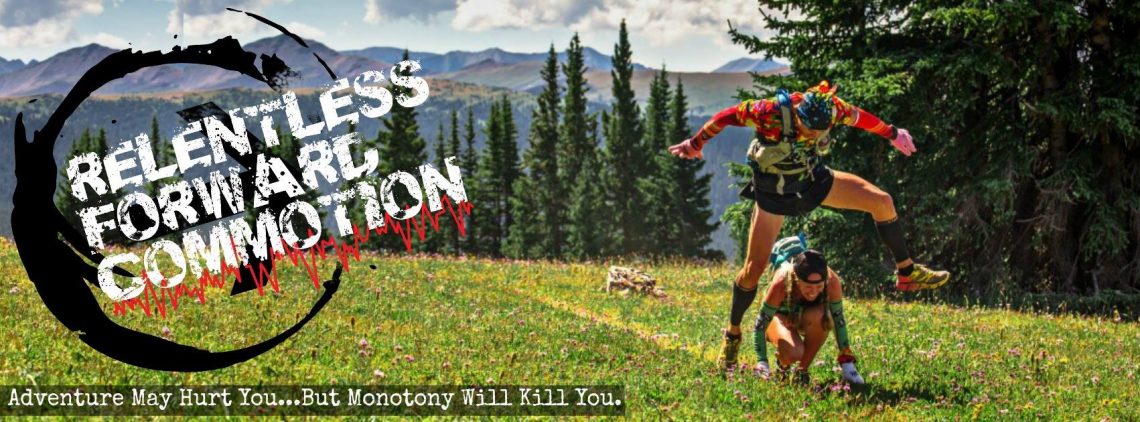
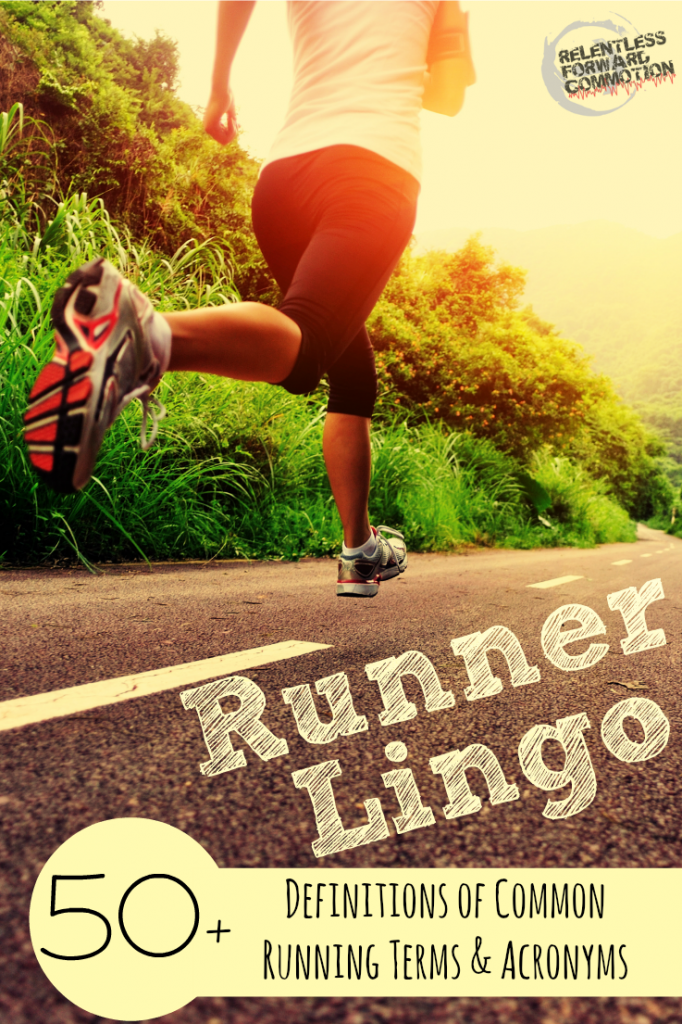
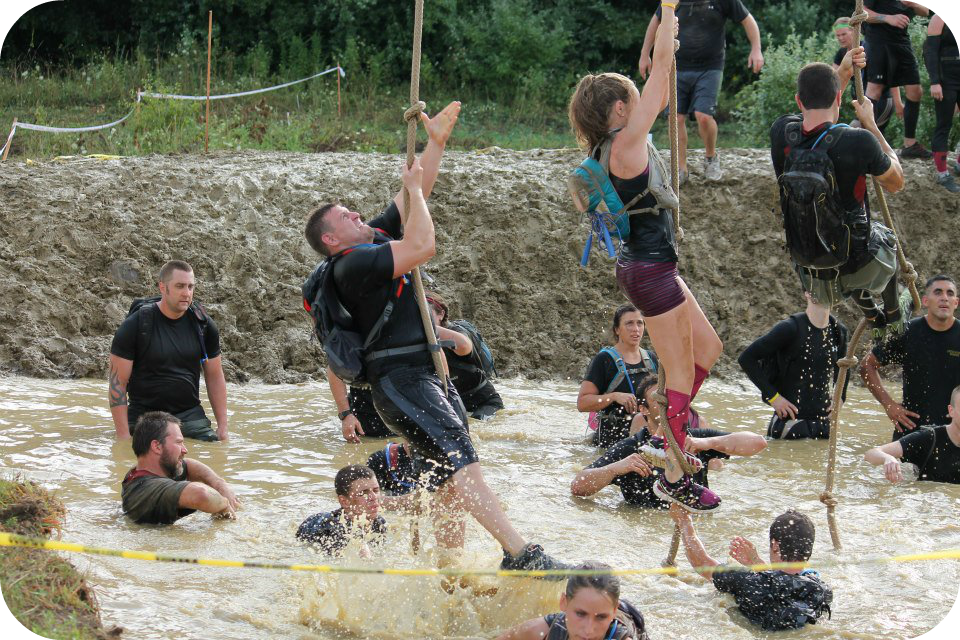
Elle
Fun post and very helpful. A few I hadn’t heard before and love the picture of BONKED!
Heather
haha, thanks! That was thankfully at a finish line, and not a random mid race bonk 😉
Colorado Gal
The good ol’ runner’s high….I’m convinced that’s what keeps me signing up for things. Immediately after every race, I’m all “LET’S REGISTER FOR ALL THE EVENTS!!”
Heather
A-FREAKING-MEN.
Happy Fit Mama (@happyfitmama)
Seriously…it’s like a whole other language. When I first started running I felt like I needed an interpreter! I’ve never heard of a snot rocket as a farmer’s blow. Makes total sense though!
Heather
It might be a regional term, haha!
Strength and Sunshine
This is so good! I actually didn’t know some of these! I could never figure out what FOMO meant!
organicsandra
This is an awesome post Heather! And yes, each sport does truly have its own lingo! Now I finally know what FOMO means 🙂
Heather
I’m shocked at how many of you didn’t know what FOMO meant!
Deborah @ Confessions of a Mother Runner
Ha great post! Never heard of FOMO but so true! I hate missing out and now with this dumb injury I have to miss a few spring races. Torture!
Heather
FOMO is a horrible, horrible condition!
Christine @ Love, Life, Surf
This is awesome Heather. It is like a different language! My favorite? DFL haha
Heather
It’s a badass term for sure 😉
Nicole @ Fitful Focus
Such a fun post! I’ll have to save this one and send it to my family and friends so they can understand me haha!
Heather
Yes! I should have called it the “secret guide to decoding runner speak for friends, family, and loved ones” 🙂
Kathryn @ Dancing to Running
What a great list! I often feel left in the dark with some of the latest text and Social Media lingo. Although I knew most of these terms, I’m sure there are other runners out there who will find this list extremely helpful.
Heather
I’m with you Kathryn, I have no idea what half of the acronyms used on general social media these days mean! I’m still stuck in the era of “LOL” 😉
Femme Fitale Fit Club
What happened to tapering? LOL I did not know what that meant when my friends mentioned it last year. This is a good list and I needed this list about 3 years ago!!! LOL. I was so clueless.
Heather
Great one, I can’t believe I forgot that! I’ll add it in, thank you!
MCM Mama Runs (@mcmmama)
Yay! I’m a runner! I actually knew every single term on your list. LOL
Heather
hahaha yaay! I wouldn’t expect anything less from you 😛
jillconyers
I remember the first time I heard the word fartlek. Jokes ensued by my kids and yes by my husband too.
Heather
I first heard the term “fartlek” in 8th grade when our soccer coach insisted we run them. As you can imagine, a group of 20 something 13 year olds found this absolutely HILARIOUS!
Rachel @RunningRachel
Oh. My. Yes! LOVE THIS POST! I totally use these terms daily… and forget that not everyone speaks my “running language” 😉
fitfoodiemama
Love this! I have learned so many new terms in the last few years…I seriously couldn’t have told you what some of these meant a few years ago!!
Jenn - a traveling Wife
Whoa – how in the world am I to remember those! Kidding aside, I am an amateur runner but most of these are understandable.
Erica G
I should have had this a week ago when I was having a run meeting pre-event and my non-running co-workers started looking at me blankly. I realized I needed to start explaining more!
Heathers Looking Glass
these are great! I still remember when I first started running I had no clue what most of these were!
Stephanie H. (@FitMomTraining)
Love this list! Now I have a place to refer friends to when they think I’m talking running nonsense 🙂
mommyrunsit
I smiled all the way through this because it confirmed that I am, in fact, A Runner. Go figure.
AJ @ NutriFitMama
What a fun post! There are a few here that I hadn’t heard of before!
SuzLyfe
OH FOMO. Sometimes you don’t even realize that you are at risk for experiencing FOMO until the day of. And then, well, you are screwed!
Heather
hahaha so true! Darn FOMO!
Holly J
What about foot prep? The foot working before and after a run. First walk on the inside of the foot, then the out side. Once the inside and out side are done walk on your toes then your heals.
Balaji
URO… Unidentified running object. When u cross a runner during your regular running route. Someone whom you dont recognize.
Ben
DNQ – Did not qualify
M bianca
Very helpful to a mom of a xc runner! Thanks!